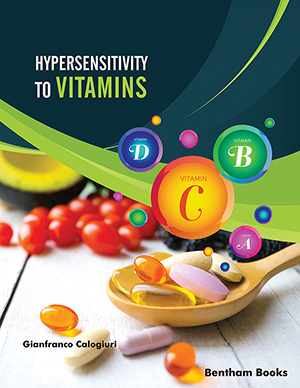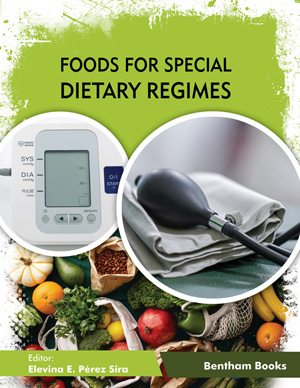
Abstract
Background: In several studies, Vitamin D supplementation was found useful against the highly infectious SARS-CoV-2 to reduce the mortality rate and severity of its infection. Viral replication was also found to be affected negatively by vitamin D administration.
Objective: The literature was reviewed with an aim to evaluate the efficacy of the therapeutic approach of nutrition involving intervention of Vitamin D towards decreasing the severity of prevailing pandemic of SARS-CoV-2.
Methods: A background research of literature was performed using the keywords “SARS-CoV- 2”, “COVID-19”, “nutritional therapy”, “Vitamin D”, “immunity”, “AEC2 receptors” and “RAS” in the Pubmed and Google Scholar.
Results: This literature was review suggested that if combined with medical sciences, this nutritional therapy approach can end up as an influential solution to reduce the severity of SARSCoV- 2 infection, which is a prevailing pandemic. A combination of assessment, supplementation of this required micro-nutrient (Vitamin D), and monitoring can be used to aid the immune system of COVID-19 patients.
Conclusion: Nutritional therapy with Vitamin D as a major factor can be used to increase the immunity of an individual to fight against the highly infectious SARS-CoV-2. However, the actual mechanism of how Vitamin D supplementation functions to improve the health of an individual is yet unclear.
Keywords: SARS-CoV-2, COVID-19, Nutritional therapy, Vitamin D, Immunity, AEC2 receptors, RAS.
[http://dx.doi.org/10.1101/2020.02.07.937862]
[http://dx.doi.org/10.1016/S0140-6736(20)30211-7] [PMID: 32007143]
[http://dx.doi.org/10.1016/S0140-6736(20)30183-5] [PMID: 31986264]
[http://dx.doi.org/10.1016/j.ajp.2020.102083] [PMID: 32283510]
[http://dx.doi.org/10.3390/nu12040988] [PMID: 32252338]
[http://dx.doi.org/10.1080/07315724.2020.1806758] [PMID: 32870735]
[http://dx.doi.org/10.1038/s41430-020-0664-x] [PMID: 32433599]
[http://dx.doi.org/10.1016/S0140-6736(20)30628-0] [PMID: 32192578]
[http://dx.doi.org/10.1002/jmv.25708] [PMID: 32056235]
[http://dx.doi.org/10.1186/s41256-020-00135-6] [PMID: 32226823]
[http://dx.doi.org/10.3201/eid1002.030913] [PMID: 15030705]
[http://dx.doi.org/10.3201/eid1212.060401] [PMID: 17326933]
[http://dx.doi.org/10.1126/science.abb2762] [PMID: 32132184]
[http://dx.doi.org/10.1016/j.eclinm.2020.100433] [PMID: 32766542]
[http://dx.doi.org/10.1016/j.tmaid.2020.101623] [PMID: 32179124]
[http://dx.doi.org/10.1016/j.jinf.2020.03.005] [PMID: 32171866]
[http://dx.doi.org/10.2337/dc20-0660] [PMID: 32409498]
[http://dx.doi.org/10.2337/dc20-0643] [PMID: 32430459]
[http://dx.doi.org/10.1136/bmj.m1966]
[http://dx.doi.org/10.1016/j.clnu.2004.06.004] [PMID: 15380917]
[http://dx.doi.org/10.1016/j.clnu.2018.05.024] [PMID: 30005900]
[http://dx.doi.org/10.1016/j.nut.2020.110835] [PMID: 32280058]
[http://dx.doi.org/10.1056/NEJMra070553] [PMID: 17634462]
[http://dx.doi.org/10.1016/j.clnu.2020.03.022] [PMID: 32305181]
[http://dx.doi.org/10.1152/physrev.00014.2015] [PMID: 26681795]
[http://dx.doi.org/10.1016/j.jaut.2017.07.007] [PMID: 28733125]
[http://dx.doi.org/10.1093/jn/nxaa332] [PMID: 33188401]
[http://dx.doi.org/10.1001/archinternmed.2008.560] [PMID: 19237723]
[http://dx.doi.org/10.3390/nu12051359] [PMID: 32397511]
[http://dx.doi.org/10.1101/2020.05.08.20095893]
[http://dx.doi.org/10.1007/s40200-021-00775-6] [PMID: 33816359]
[http://dx.doi.org/10.1093/ajcn/nqaa381] [PMID: 33515005]
[http://dx.doi.org/10.1111/j.1651-2227.2009.01594.x] [PMID: 19900174]
[http://dx.doi.org/10.1111/j.1442-200X.2010.03224.x] [PMID: 21648117]
[http://dx.doi.org/10.1002/rmv.2269]
[http://dx.doi.org/10.1016/j.nut.2020.111017] [PMID: 33039952]
[http://dx.doi.org/10.1136/postgradmedj-2020-139065]
[http://dx.doi.org/10.3390/nu12010236] [PMID: 31963293]
[http://dx.doi.org/10.1101/2020.01.31.929042]
[http://dx.doi.org/10.3390/nu12092550] [PMID: 32842513]
[http://dx.doi.org/10.3892/mmr.2017.7546] [PMID: 28944831]
[http://dx.doi.org/10.1038/nature03712] [PMID: 16001071]
[http://dx.doi.org/10.1038/s41430-020-0661-0] [PMID: 32398871]
[http://dx.doi.org/10.1359/jbmr.2004.19.2.265] [PMID: 14969396]
[http://dx.doi.org/10.1111/pai.13271] [PMID: 32359201]
[http://dx.doi.org/10.4049/jimmunol.0803217] [PMID: 19843932]
[http://dx.doi.org/10.1101/2020.04.08.20058578]
 48
48 2
2





















